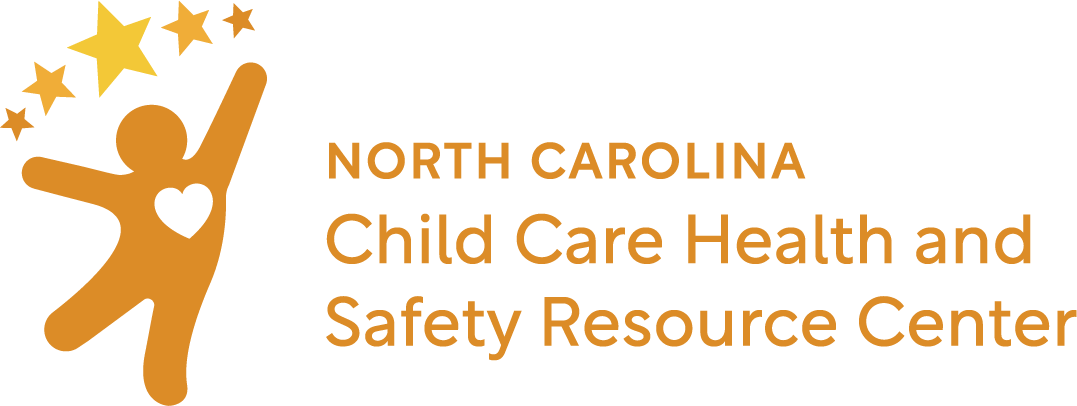Bloodborne Pathogens Standard for Child Care
The federal Occupational Health and Safety Administration’s (OSHA) laws protect the health and safety of workers. OSHA laws, or “standards,” ensure that employers protect their employees from work-related hazards, including exposure to diseases carried in the blood.
The NC Department of Labor protects North Carolina citizens by enforcing OSHA laws and provides education and technical assistance for creating a safe workplace. Their website explains more about the Bloodborne Pathogens Standard.
Bloodborne Pathogens
Early educators are at risk of exposure to several infectious diseases carried in blood or other body fluids (called other potentially infectious materials). Germs that cause diseases are “bloodborne pathogens”. OSHA developed the Bloodborne Pathogens Standard 29 CFR 1910.1030 to prevent the transmission of human immunodeficiency virus (HIV), Hepatitis B virus, and others (Hepatitis C virus, Ebola, Hantavirus).
Covered Employees
North Carolina Child Care Rules 10A NCAC 09 .1102 and .1702 requires CPR and First Aid training for all staff who:
- provide direct care
- accompany children when off premises
Performing first aid or CPR puts early educators at risk for exposure to blood or other potentially infectious body fluids while at work. Because of the this risk, the Bloodborne Pathogens (BBP) standard, applies to all staff who receive CPR and First Aid training.
Requirements of the Standard:
According to OSHA’s Bloodborne Pathogens Factsheet, the standard requires employers to:
- Establish an Exposure Control Plan which outlines the steps taken to protect employees from exposure to bloodborne pathogens
- Treat all blood and other potentially infectious material as if it is infected with bloodborne pathogens
- Use devices that are engineered for safety, such as puncture proof needle disposal containers
- Implement work practices that reduce the risk of exposure, such as the methods used to clean up blood or handle used needles
- Provide and ensure the use of Personal Protective Equipment (PPE), such as gloves, and eye protection for cleaning up blood spills
- Make Hepatitis B vaccinations available to all employees at risk of exposure (i.e. all staff who are responsible for direct care or accompany children when they are off premises)
- Offer medical evaluation and follow-up after any blood exposure at no cost to the worker
- Use labels and signs to communicate hazards
- Provide information and training to workers
- Maintain worker medical and training records.
Written Exposure Control Plan
The Bloodborne Pathogen Standard requires child care facilities to protect employees by following a written Exposure Control plan. The plan includes:
- which employees may be at risk
- how the program will reduce this risk
- what the program will do if a situation occurs that puts an employee at risk
Download a sample Exposure Control Plan from the NC Department of Labor.
The Exposure Control Plan must be reviewed, and updated if necessary, yearly.
Hepatitis B vaccination protection
Employers must offer employees education about the Hepatitis B vaccine, including
- how well the vaccine works
- safety information
- how it is administrated
- the benefits of vaccination
They must offer the hepatitis B vaccine at no cost to the employee. It must be offered within 10 days of starting employment. If the employee declines the vaccination, they must sign a standardized declination form.
If providing first aid and CPR is not the primary job responsibility for an employee, employers are allowed, if their plan for doing so is detailed in their ECP, to offer the Hepatitis B vaccine after any incident involving blood exposure rather at the beginning of employment.
More information is available on the OSHA Fact Sheet – Hepatitis B Vaccination Protection.
Required Training
The OSHA standard requires that employees receive training on bloodborne pathogens when they begin work and annually thereafter. This training should cover:
- how HIV, hepatitis B, and other bloodborne diseases are spread
- how to use standard precautions
- an orientation to the program’s Exposure Control plan
- reporting procedures and any other program policies
For more information and assistance:
- Read the Guide to bloodborne pathogens in the workplace from the NC Department of Labor
- Contact the NC Department of Labor for assistance regarding any workplace safety and health requirements in North Carolina
- Contact your Child Care Health Consultant or the NC Health and Safety Resource Center
